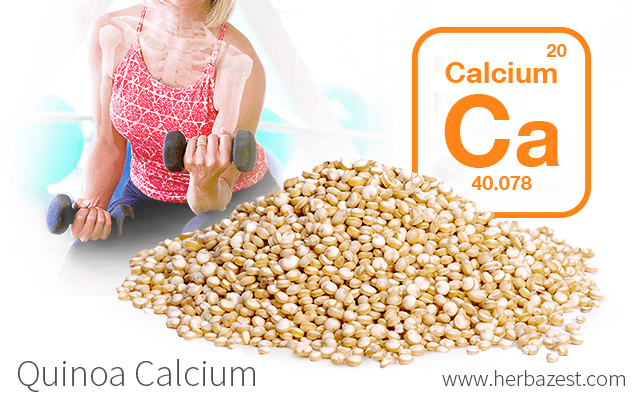While primarily known for being a good source of macronutrients, quinoa also contains key dietary minerals that are essential for maintaining and regulating bodily functions. Alongside complex carbohydrates and complete protein, quinoa's calcium content can significantly improve overall health as part of a balanced diet.
What Is Calcium?
Calcium is a highly important mineral that is found in a variety of foods. Because calcium is typically stored in the bones and teeth, it is essential for skeletal development as well as bone maintenance. Additionally, calcium plays an important role in muscle response and nerve function.
The daily amount of calcium to include in a healthy diet depends on a number of factors, including age, gender, and reproductive status. However, adults between the ages of 19 and 50 years should consume 1,000 milligrams of calcium daily.1
While most people don't get the daily recommended amounts of calcium, those at the greatest risk are children and the elderly. Long-term calcium deficiency has been liked to low bone mass as well as increased risk of osteoporosis and bone fractures.
Calcium in Quinoa
Quinoa's calcium levels are quite decent, with 31 milligrams of calcium per one cup (185 grams) of cooked quinoa.2 In comparison, one cup of cooked wheat (172 grams) offers 15 milligrams of calcium per 100 grams, and only nine milligrams when is cooked.3
However, many other vegetables surpass the levels of calcium in quinoa. For example, raw kale contains approximately 254 milligrams of calcium per 100 grams.4
While it may not be the best source of calcium out there, it is worth including quinoa in one's diet as its calcium content still constitutes a significant portion of the recommended daily value for this essential mineral. This is especially true for those seeking a more nutritious alternative to wheat to complement their healthy meals.
Sources
- Journal of Nutrition and Food Sciences, Quinoa (Chenopodium quinoa Willd), from Nutritional Value to Potential Health Benefits: An Integrative Review, 2016
- Journal of the Science of Food and Agriculture, Effects of roasting and boiling of quinoa, kiwicha and kañiwa on composition and availability of minerals in vitro, 2010
- National Institutes of Health, Calcium
- USDA Nutrient Database, Quinoa, uncooked | Wheat flour, whole-grain, soft wheat | Milk, fluid 1% fat, without added vitamin A and vitamin D | Kale, raw
- Nutrition Journal, Calcium and osteoporosis, 1997
Footnotes:
- Mayo Clinic. (2020). Calcium and calcium supplements: Achieving the right balance. Retrieved September 21, 2021 from https://www.mayoclinic.org/healthy-lifestyle/nutrition-and-healthy-eating/in-depth/calcium-supplements/art-20047097
- US. Department of Agriculture. (n.d.). Quinoa, cooked. Retrieved September 21, 2021 from https://fdc.nal.usda.gov/fdc-app.html#/food-details/168917/nutrient
- Nutrition Value. (n.d.). Wheat, cooked, Kamut khorasan. Retrieved September 21, 2021 from https://www.nutritionvalue.org/Wheat%2C_cooked%2C_KAMUT_khorasan_nutritional_value.html
- US Department of Calcium. (2019). Kale, raw. Retrieved September 21, 2021 from https://www.aafp.org/afp/2005/1101/p1707.html




